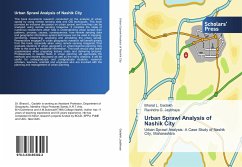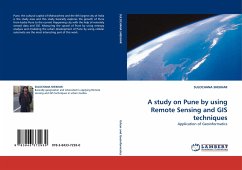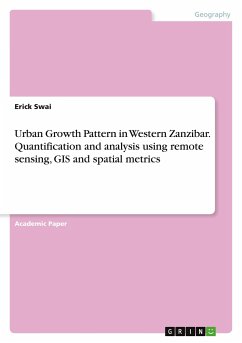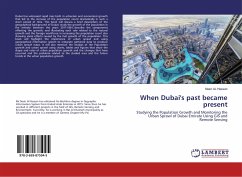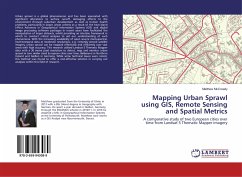
Mapping Urban Sprawl using GIS, Remote Sensing and Spatial Metrics
A comparative study of two European cities over time from Landsat 5 Thematic Mapper imagery
Versandkostenfrei!
Versandfertig in 6-10 Tagen
24,99 €
inkl. MwSt.

PAYBACK Punkte
12 °P sammeln!
Urban sprawl is a global phenomenon and has been associated with significant alterations to surface runoff, damaging effects to the environment through suburban development as well as human health problems, particularly in larger urban centres as a result of the heat island effect. Advances in Geographical Information Systems (GIS) and digital image processing software packages in recent years have facilitated the manipulation of larger datasets, whilst providing an intuitive framework in which to conduct critical analyses to aid our understanding of such phenomena. With the increasing availab...
Urban sprawl is a global phenomenon and has been associated with significant alterations to surface runoff, damaging effects to the environment through suburban development as well as human health problems, particularly in larger urban centres as a result of the heat island effect. Advances in Geographical Information Systems (GIS) and digital image processing software packages in recent years have facilitated the manipulation of larger datasets, whilst providing an intuitive framework in which to conduct critical analyses to aid our understanding of such phenomena. With the increasing availability of open source multi-spectral, multi-temporal data at moderate resolutions, e.g. remotely sensed satellite imagery, urban sprawl can be mapped effectively and efficiently over vast areas with high accuracy. This research utilised Landsat 5 Thematic Mapper data with a 30 metre pixel resolution to detect, map and monitor urban sprawl in two similar sized European cities over time, Ballymena in Northern Ireland and Gießen in Germany. While some technical issues were noted, this method was found to offer a cost-effective solution in carrying out analyses within this field of research.







